Scientifically known as Canis lupus dingo, the dingo is native to Australia and is naturally adapted to the harsh climates that characterize the Pacific region. Dingoes are considered wild dogs and have a social order similar to that of wolves.
There are myriads of facts about the dingo, and we have curated 10 of the most fascinating ones below.

1. Some Scientists Believe Dingoes Were Once Domesticated
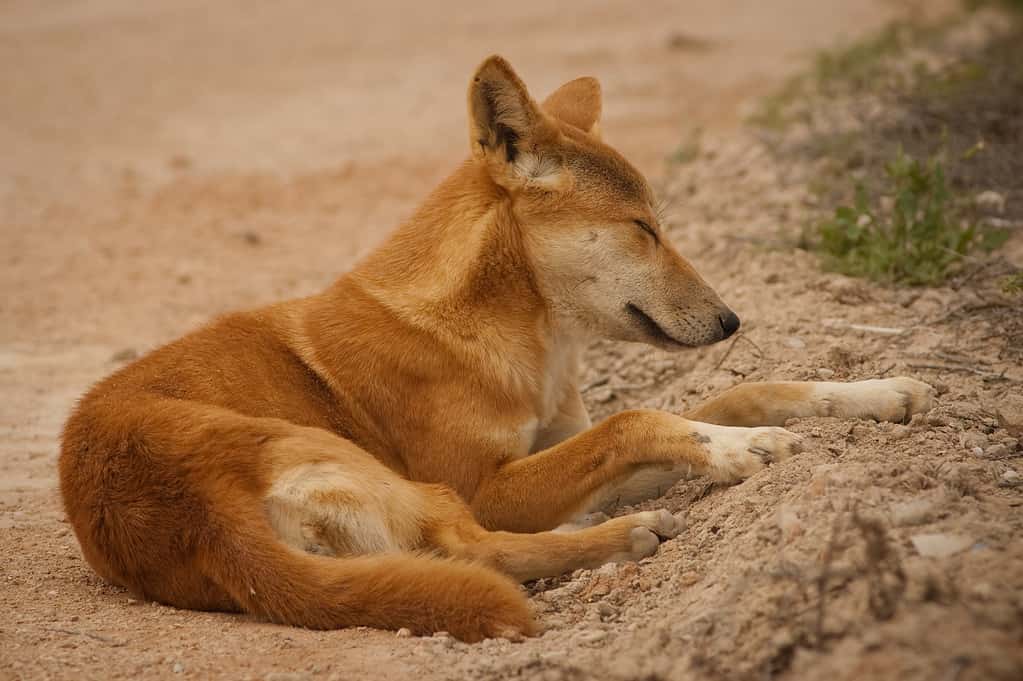
The domestication idea probably explains why up to this day, dingoes are somewhat comfortable around humans.
©Henry Whitehead, CC BY-SA 3.0 – License
The oldest dingo fossil was estimated to be about 3,500 years old. However, some experts believe that dingoes have been around much longer than that. The belief stems from the idea that dingoes were once domesticated but were dropped in Australia about 4,000 years ago. The domestication idea probably explains why up to this day, dingoes are somewhat comfortable around humans.
Having been left uncatered to in the wild, they became wild again and even adopted some wolf-like behaviors. Talk about an origin story!
2. Dingoes Are Skilled Predators
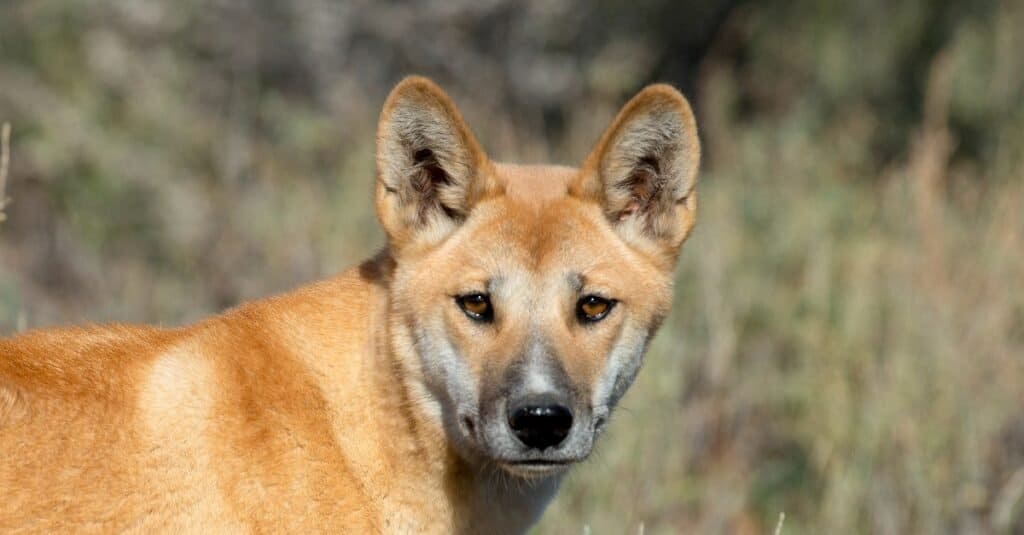
Dingoes coordinate into packs, which makes them excellent predators.
©John Carnemolla/Shutterstock.com
Over the years, dingoes have earned a reputation for being among the largest predators in Australia. They had myriads of prey to feed on, and they were always willing to go to work (hunt). Dingoes have a diet that includes rabbits, rodents, fish, crabs, insects, and amphibians, as well as bigger animals like wallabies, cattle, possums, and kangaroos, amongst others.
Dingoes have excellent stamina, but it’s their coordination into packs that make them excellent predators. Their usual strategy is chasing down prey towards other members of the pack like a deadly ambush. Sometimes, they also rely on stamina to chase down the prey for as long as it takes the prey to become exhausted. Quite the resilience there, huh?
3. One Of The Most Monumental Structures In Australia Was Built To Keep Out Dingoes

Dingoe fence in the Australian Outback. The fence is 9600 kilometers long, it keeps the dingo dogs out of the areas, where the sheep graze.
©Dmitry_Chulov/ via Getty Images
Some population groups of dingoes were close to humans, and they sometimes attacked pet rabbits and flocks. This was a growing problem through the 1800s, and by the 1880s, small fences were built, and they, unfortunately, fell into serious disrepair afterward.
In the 1900s, plans were in place to convert these small fences and additional ones to a single long structure. The fence stretched to over 5,000 miles at the time, but after some time, it was shortened to approximately 3,488 miles, which is still massive. Little wonder, some reports say maintenance for the fence costs about 10 million Australian dollars every year. While that’s a lot of money, the stakeholders believe it’s all worth it. All of that makes the dingo the ultimate “gangster” dog. How else do you describe an animal that humans spend a fortune to keep away?
4. Some People Keep Dingoes As Pets
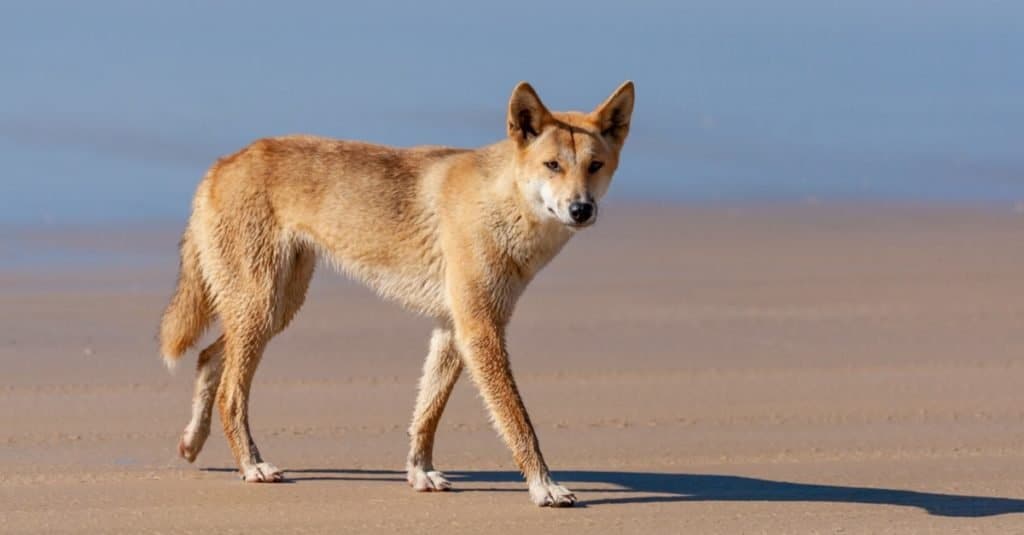
Keeping dingoes as pets is illegal in some Australian districts, including Tasmania, Queensland, and South Australia.
©Jason Cassidy/Shutterstock.com
It takes a lot of courage and resources to keep a semi-wild dog like the dingo as a pet, and some humans are apparently up to that rather uphill task. Dingo owners claim they can be very loving and submissive as pets as long as you treat them right.
However, the downside is they are high-maintenance, and satisfying them takes more than just getting a leash. Owing to their intrinsic pack values, they require a lot of attention, and that includes patting, talking, and kissing. Leaving them isolated and forlorn is a way to get them upset, and trust us when we say you don’t want that smoke.
Dingoes also detest a change of environments, so if you’re going to get one, you might not have the liberty to move often, not if you consider your dingo’s feelings.
Besides that, keeping dingoes as pets is illegal in some Australian districts, including Tasmania, Queensland, and South Australia. In Victoria and the Northern Territory, you’d need a special permit, while the laws of New South Wales and Western Australia allow you to domesticate them without permits.
There are different laws in the United States, so if you intend to own a dingo in the U.S., you should check with the municipal authorities to make sure it’s not illegal.
5. Dingoes Are Known To Mix With Other Dogs
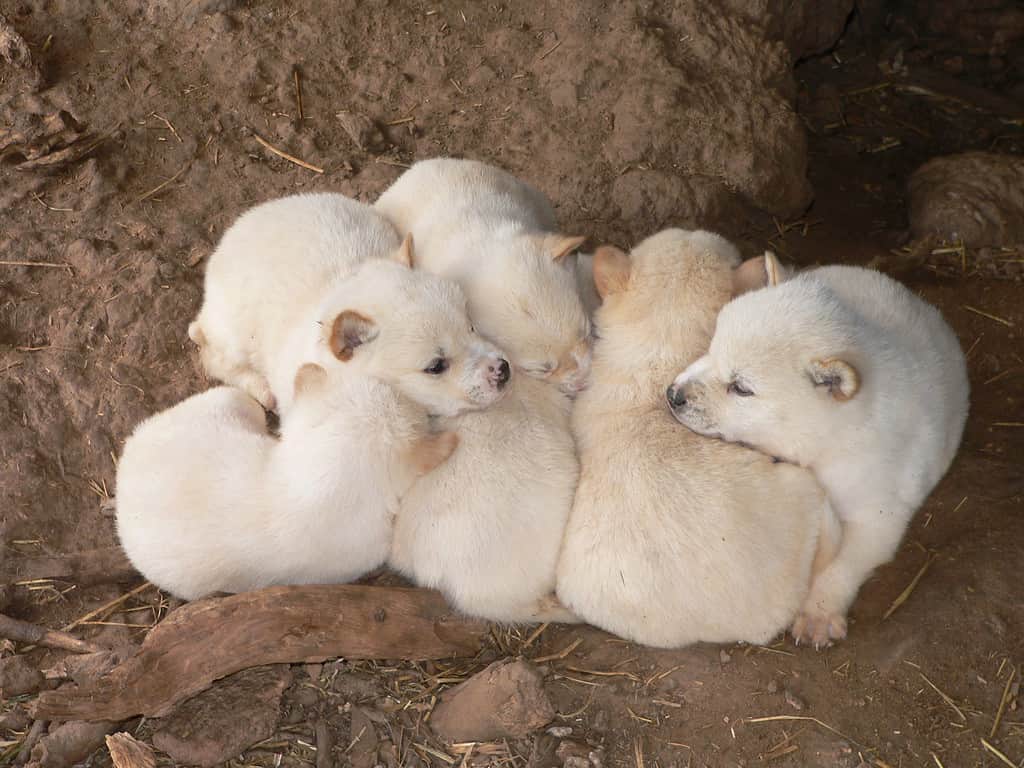
Dingo blood has been found in Australian Cattle Dogs and Australian Kelpies.
©ozflash/ via Getty Images
Despite being wild dogs, dingos typically mix with other canines, which is why we have various dogs with dingo blood, especially in Australia. Dingo blood has been found in Australian Cattle Dogs and Australian Kelpies. Also, breeders do not mind interbreeding, as it makes working dogs a lot buffier.
6. Dingoes Have Bendy Wrists
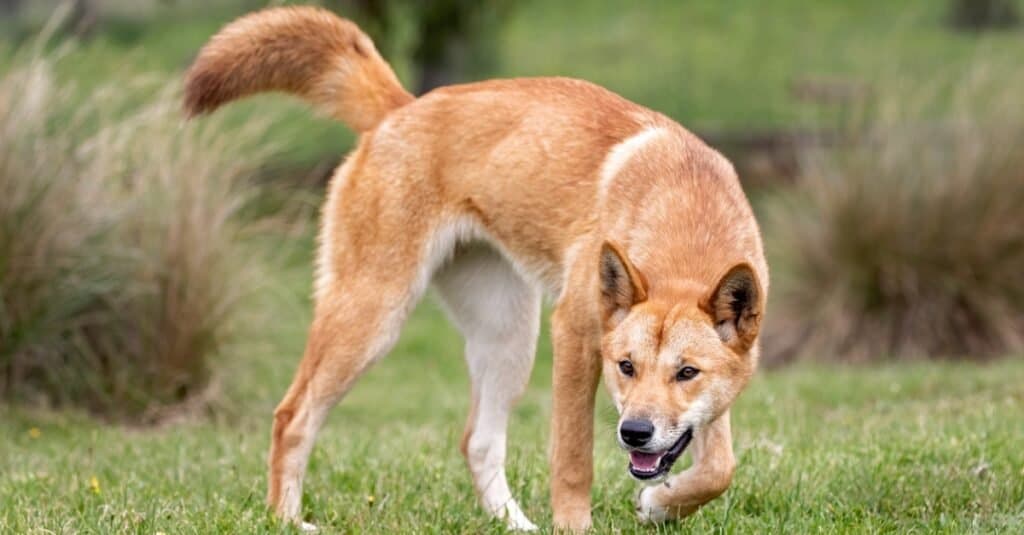
Dingoes have flexible wrists, which makes their paws useful for opening doors and climbing trees.
©iStock.com/Andrew Haysom
One of the most incredible characteristics of dingoes is their flexible wrists, which makes their paws useful for opening doors and climbing trees. Their bendy wrists are also one of the reasons local farmers consider them unrelenting pests because it gives them the ability to get and climb into places that other dogs can’t.
7. Dingoes Live Longer In Captivity
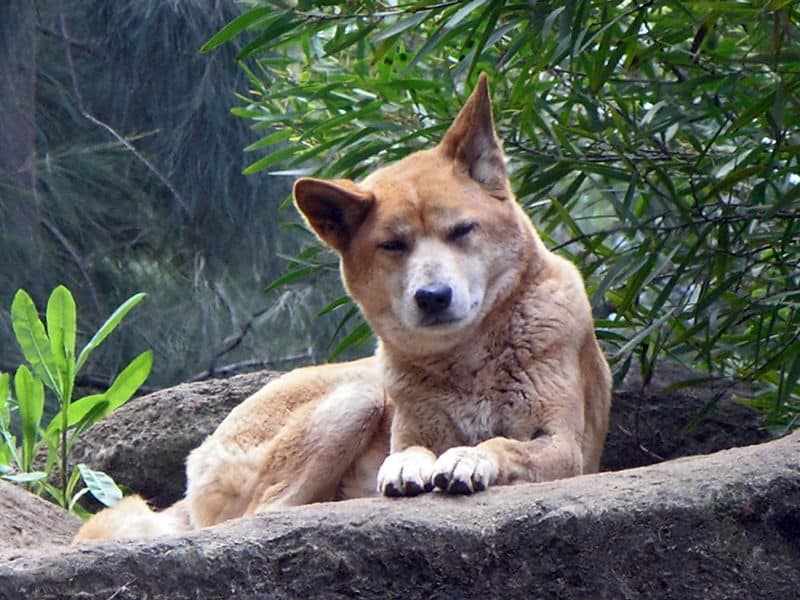
Dingoes, like this one at the Perth Zoo, are expected to live for 18-20 years.
©SeanMack, CC BY-SA 3.0, via Wikimedia Commons – License
In the wild, the average lifespan of dingoes is about 5-10 years. Conversely, when they are in captivity, they are expected to live for 18-20 years. Not many pet dogs can boast such an impressive lifespan.
8. Dingoes Have Excellent Vision
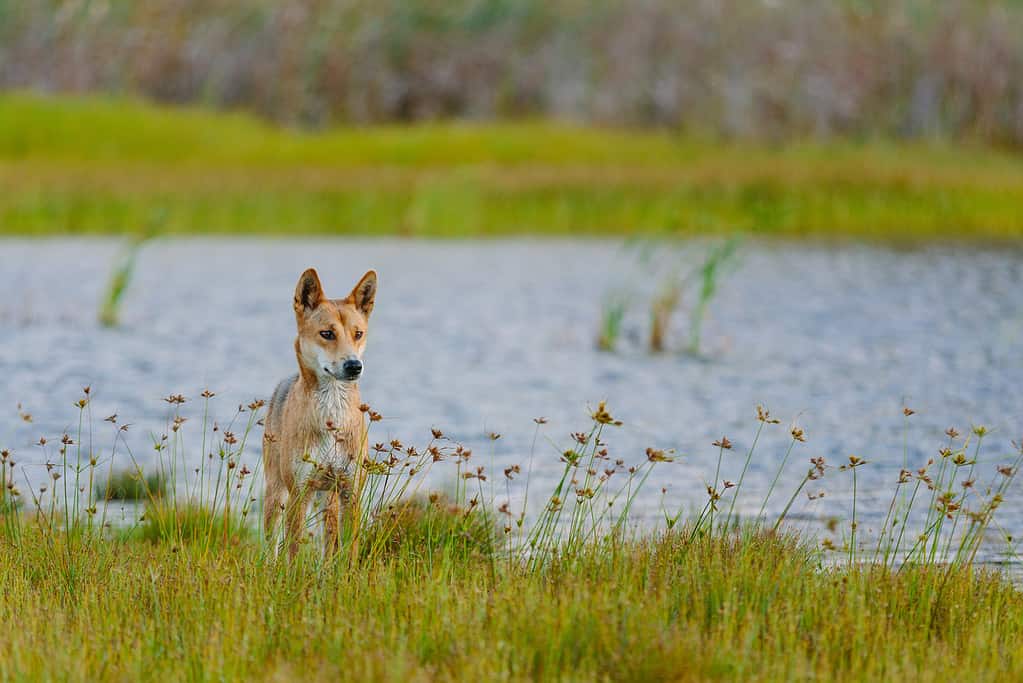
Dingoes excellent vision is aided by their ability to turn their heads about 180 degrees.
©oxime/ via Getty Images
Dingoes also have excellent vision, and this is further aided by their ability to turn their heads about 180 degrees. To put that in perspective, most humans can only go as far as 70 degrees, with some exceptions, of course. Also, owls, on average, can turn their heads 270 degrees, which makes the dingo’s 180 degrees even more impressive.
9. There Are Different Kinds Of Dingoes
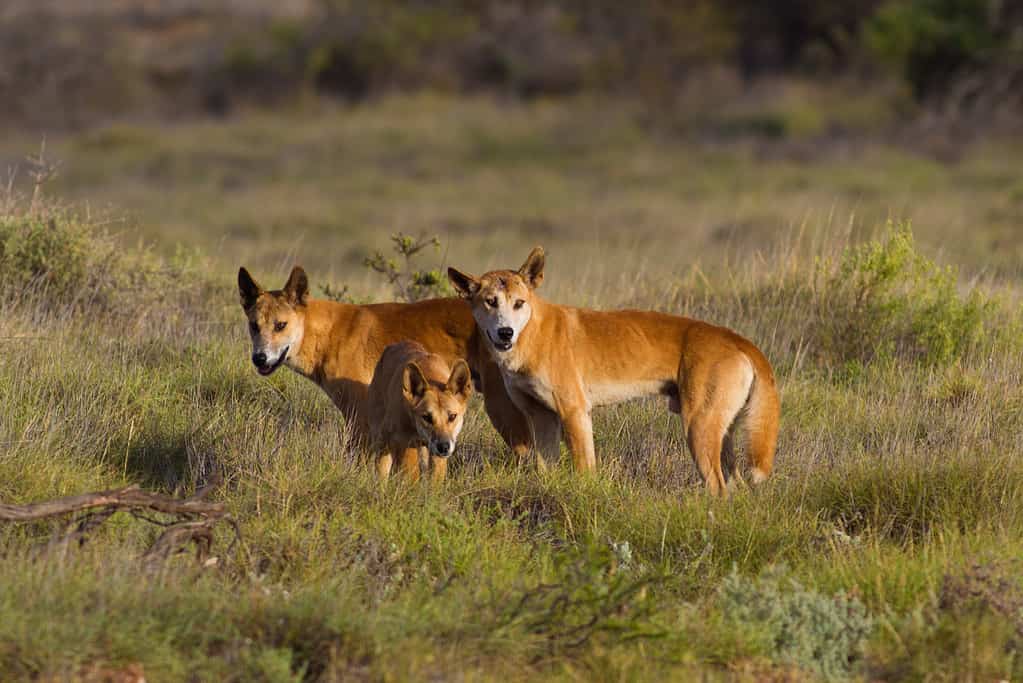
Dingoes are classified into three major types; desert, alpine, and northern.
©indianoceanimagery/ via Getty Images
Dingoes aren’t all the same in terms of color and body size due to differences in climates across the Australian continent. They are classified into three major types; desert dingoes, which are known to be sand-colored, reddish, or golden yellow, alpine dingoes, which are rare and are distinguished by their light cream coats, and northern dingoes, which are known for their lack of double coats as well as having the finest build of the three types.
10. Dingoes Howl More Than They Bark

Dingo howls sound a lot like yodels and are similar to the ones obtainable in wolves.
©CraigRJD/ via Getty Images
Besides their inclination to form packs, dingoes have other wolf-like traits, which include their propensity to howl rather than bark. Their howls sound a lot like yodels, and they are similar to the ones obtainable in wolves.
Bonus Facts About Dingoes
- Pariah dogs, native to the United States, are considered a version of dingoes.
- Dingoes have a very rigid pack culture headed by alpha males and females and characterized by a crude dictatorship. For instance, alpha females would sometimes kill the pups of other dingoes just so the dingoes could take care of their own pups.
- Dingoes were once listed as “potentially vulnerable” but were later removed due to the difficulty in properly classifying them. They made the list because of the massive decline in the dingo population, which is due, in large part, to crossbreeding and attacks from human hunters.
The photo featured at the top of this post is © iStock.com/indianoceanimagery
Thank you for reading! Have some feedback for us? Contact the AZ Animals editorial team.






